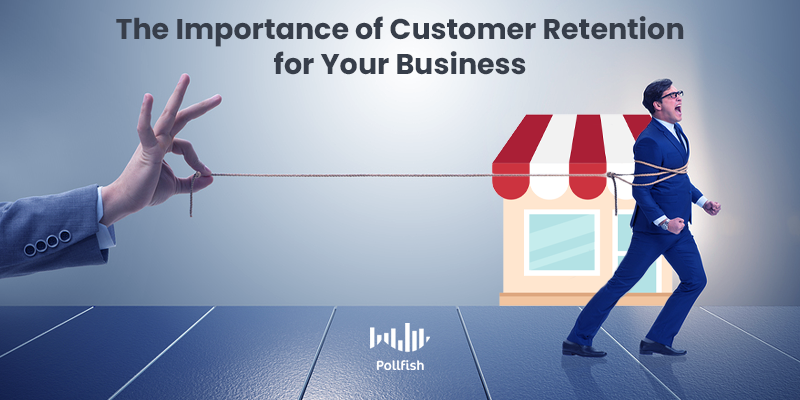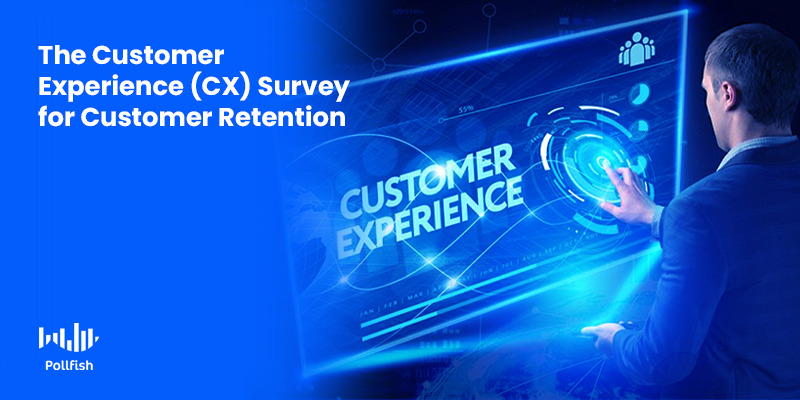Diving Into the Customer Retention Survey to Scale Your Business
The customer retention survey is a critical market research survey for business success. As its name implies, it allows businesses to both understand and boost their customer retention.
In today’s mobile-first world, in which experience is king and agile data is on-demand, customer retention takes precedence over customer acquisition — at least it should, in order to scale your business. As another term for growth, “scaling” may conjure up customer acquisition, when in fact, customer retention largely contributes to scaling.
Customer retention is more important as a long-term strategy for numerous reasons. A mere 5% increase in customer retention boosts profits by 25-95%. It costs 16 times more to build a long-term relationship with a new customer than it does to keep an existing customer. Thus, businesses ought to monitor this aspect of their business.
The customer retention survey helps you do just that. This article delves into the customer retention survey, its chief types and illustrates how to create one so that you establish loyal customers to scale your business.
Defining Customer Retention
Customer retention is the process of building relationships with existing customers to ensure that they continue making purchases and patronizing a business.
In opposition with customer acquisition and lead generation, customer retention involves engaging the same group of customers to strengthen business ties with them, as opposed to making efforts to capture new customers (who may not become repeat customers).
As such, customer retention involves strategies that retain the portion of your target market that has converted at least once. It is the driving force behind customer loyalty. As a matter of fact, customer loyalty and customer retention share a symbiotic relationship, as loyal customers will convert more (inciting retention) and customers you’ve retained become more loyal.
In this way, customer retention is also the key factor behind customer lifetime value or CLV, which refers to the total value a customer will contribute to a business during their lifetime relationship with that business.
A business must forge customer retention, as 93% of customers are more likely to be retained by companies with excellent customer service. Customer retention is thus a vehicle for a continuous flow of revenue.
The Importance of Customer Retention for All Businesses
Dovetailing off of the previous section, customer retention is a necessity on several key fronts, such as building customer loyalty, bolstering customer lifetime value and maintaining a steady and sufficient flow of revenue.
If the above section did not provide enough reasoning as to why businesses need customer retention, the following includes several more advantages of maintaining strong customer retention.

- It’s cost-effective: The cost of acquiring a new customer is more expensive than retaining an existing one.
- As aforesaid in the intro, building long-term relationships with new customers is 16 times more expensive than nurturing a relationship with an existing customer.
- It’s profitable: Businesses of all sizes can earn higher profits from fostering customer retention.
- It creates long-term success: Too often, businesses focus their strategy on the here and now, as it forges faster sales. While this may appear profitable for the short term, it is not realistic for the long term.
- Customer retention results in lasting relationships between companies and their customers, which forecasts continuous business success.
- Customers become business advocates: When a business forms sufficient customer retention, its customers go beyond the role of customers. Rather, they funnel their loyalty into marketing endeavors. These include:
- Writing positive reviews across forums, social media, review sites and more.
- Word-of-mouth referrals
- Retained customers are more forgiving: Although a whopping 17% of customers will leave a brand after just one bad experience, retained customers won’t, as they are more forgiving.
- Loyal customers are six times more likely to forgive companies for a bad experience.
- Your business can experiment more: Whether it’s for innovation of a product or service, or simply a change in branding direction, businesses with higher customer retention are more secure to try new things on their customers.
- Loyal customers are more willing to explore new offerings from a company it trusts.
- A relief for employees: A loss of customers or a decline in retention can take a toll on employees, especially those that deal with customers directly (sales, customer success in a B2B company).
- With strong customer retention, employees have less to worry about and are more equipped to perform optimally.
Defining the Customer Retention Survey
Retaining customers should be an objective of priority for businesses, as explained in the above sections. But in order to do so, your business needs a solid customer retention strategy. The customer retention survey is the most apt tool to keep track of and achieve strong customer retention.
Specifically, the customer retention survey is a kind of survey that provides customer intelligence so that businesses have a grasp of their own standing in their customer retention.
Additionally, this survey monitors customer sentiment in relation to a business, so it can proactively build customer retention strategies.
Because customer retention involves a variety of factors, from the product, to the customer experience (CX) to customer representative engagement and so much more, there are various ways to construct such a survey. Furthermore, there are several ways to categorize this survey type.
The Three Main Kinds of Customer Retention Surveys
Since there are several key factors and subfactors that form (or break) custom retention, businsineses should be aware that there is no single way to establish a customer retention survey. However, it can be classified into the smaller categories that build up its concept.
The following explains the three main types of customer retention surveys:
The Periodic Customer Satisfaction Survey
Being able to retain customers relies on maintaining their continued satisfaction with your company. As such, businesses ought to use the customer satisfaction survey. This kind of survey helps gauge customer satisfaction with a company at large.
It has various iterations. These include:
- The Net Promoter Score (NPS) Survey
- Allows customers to measure the likelihood of recommending your company to others, on a scale of 1 to 10.
- The Customer Satisfaction Score (CSAT) Survey
- Rates a customer’s fulfillment in a particular situation. This is where you can apply this survey to a wide range of applications, such as interactions with a salesperson or with a product feature.
- The Customer Effort Score (CES) Survey
- Measures the amount of effort a customer had to take in an action. It focuses mainly on the process of achieving an end result.
- Visual Rating Surveys
- Permits customers to express their satisfaction with graphics as opposed to word or numbers.
- The Net Promoter Score (NPS) Survey
Each of these surveys offers a different way to measure customer satisfaction. As such, they each apply their eponymous metrics, while visual ratings surveys use visual markers to rate satisfaction. These may include stars, hearts and emojis.
As this category of survey dictates by its name, it should be fielded periodically. This is how to keep track of your customers in regard to retention. Since customer needs, opinions and desires tend to change, you need to be aware of these changes so that you always provide services that delight.
The Post-Purchase Evaluation Survey
This kind of survey category involves gathering feedback from customers shortly after they convert. After all, to build customer retention, you need to monitor your customers at various points of their customer journey, even after they reached the bottom of the sales funnel and bought from your business.
Usually, this kind of survey is conducted once a customer has either made a purchase, or received a product or service. Although this kind of survey is typically deployed via a CRM (Customer Relationship Management) system, there are other ways to launch it.
It can exist in a more stealthy manner, that is, across various websites and mobile apps. By using a screening question that asks whether a site user has recently made a purchase, an online survey tool can deploy this survey to the masses (if it serves a wide network).
The Customer Experience (CX) Survey

As aforesaid, experience is king. Gone are the days in which the product and service alone were the main points of competition among brands. In order to retain your customers, you must keep them regularly satisfied.
A product or service alone won’t cut this, no matter how good your offering is. This is because it is not practical for customers to frequently make purchases, unless you offer products/services for everyday use and at reasonable prices, or, the customer persona is one with little buying pain.
The customer experience (CX) survey is a survey specifically used to obtain feedback on the CX or UX of customers. This can include intelligence on digital customer experience, such as on websites, mobile sites, apps and other digital properties, or physical experiences such as in-store or at an event.
Fomenting Customer Retention With the Best Survey Platform
All brands and small businesses can measure and strengthen their customer retention by way of market research. When you understand your customers’ desires and needs, you are setting your business up for success, as you’ll understand how to serve them.
But to properly monitor and build your customer retention, you need a strong online survey tool, the kind that makes it effortless to create a customer retention survey. Such a survey can explore far beyond customer needs, as it can clearly paint their points of contention and areas of satisfaction that your business provides.
Remember, while new customers increase your sales temporarily, loyal customers will continually frequent your business, giving way to a constant stream of revenue, thereby allowing you to scale. In order to foster customer retention, you need to monitor your customers on a periodic basis. To do this successfully, you need to use a reliable online survey platform.
Pollfish Marketing Team
Ready to Try Pollfish?
Create your survey with AI, target high-quality respondents starting at $0.95 per complete, and start getting results in just minutes in real-time. From running a simple product concept survey to managing a constant stream of trackers for dozens of clients in dozens of countries, we’ve got you.

